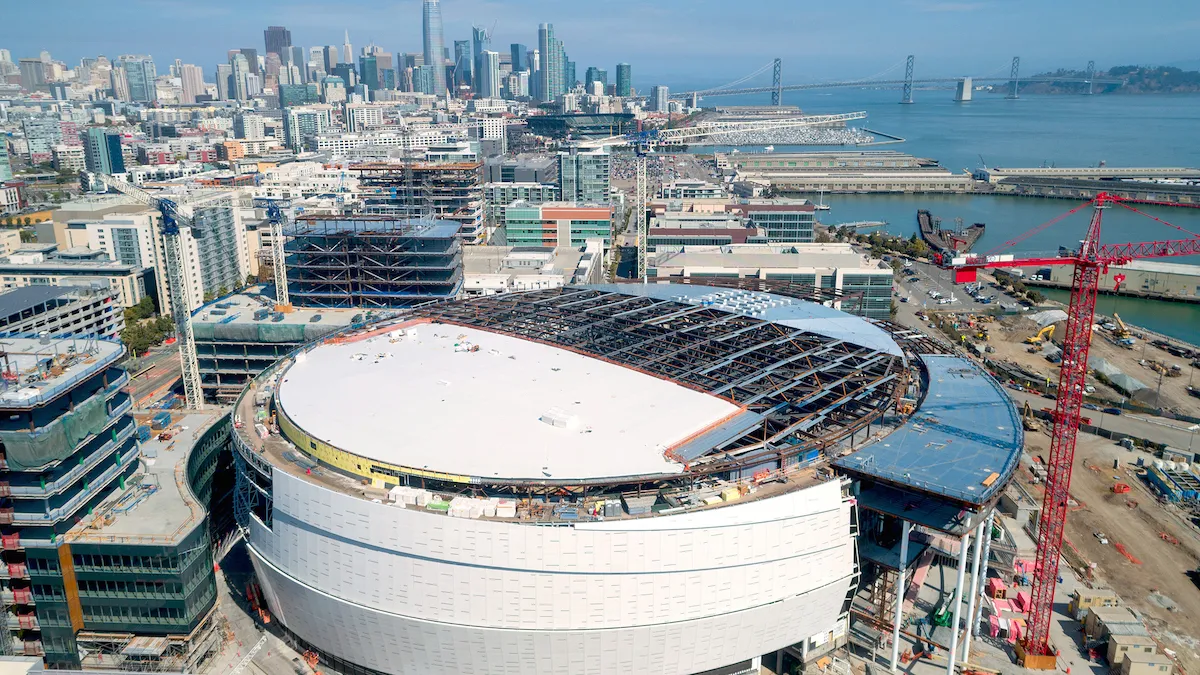Dive Brief:
- The joint venture of Mortenson Construction and Clark Construction topped out the Golden State Warriors' $1 billion Chase Center on Friday, signaling the end of 10 months of structural steel work and the beginning of an 11-month push to completion.
- SME Steel Contractors began structural work in November 2017, and fabricated and installed 10,600 tons of steel in the Chase structure and a total of 17,000 tons in the entirety of the arena-anchored mixed-use development. As the venue nears peak construction, 96 subcontractors and vendors are working on the project with approximately 1,200 skilled tradesmen and other staff on site. Crews are completing approximately $2.3 million of work each day. The project includes the 18,000-seat arena; two 11-story office buildings, 29 retail stores; more than three acres of public plazas and green space and a 1,000-vehicle capacity underground parking garage.
- Despite an accelerated construction process, the JV said it has an injury and illness rate four times lower than the national average. Mortenson-Clark also said it has seen 78 individuals, through the project's workforce training program, achieve the skills necessary to begin careers in construction. Work on the arena complex began in January 2017 and is expected to wrap up in August 2019, one month ahead of its scheduled grand opening.
Dive Insight:
In February, San Francisco's Office of Community Investment and Infrastructure reported that Mortenson-Clark had not met the small business hiring goal of 50% at the Chase Center, with only 18% of its contractors small businesses and 2% minority firms. Mortenson-Clark told NBC Bay Area that cost was a consideration, but that its and the Golden State Warriors' hiring practices were well in line with the good faith efforts required by the city.
Local governments often specify that local workers and businesses be given priority when hiring for major projects, especially those that are on the receiving end of taxpayer funds. Most municipalities or other agencies that make these local hiring demands are satisfied as long as contractors make good faith efforts to meet the quotas.
However, the city of Detroit, for example, hits contractors with large monetary penalties if they don't meet hiring goals for any reason. When contractors for the Little Caesars Arena did not meet the 51% local hiring requirement, despite all indications they pursued every available avenue, the city fined them $5.2 million.
Interestingly, federal agencies are not permitted to mandate hiring goals by location because, according to attorney Susan Lent of Washington, D.C. law firm Akin Gump Strauss Hauer & Feld, the practice is seen as restricting competition.












